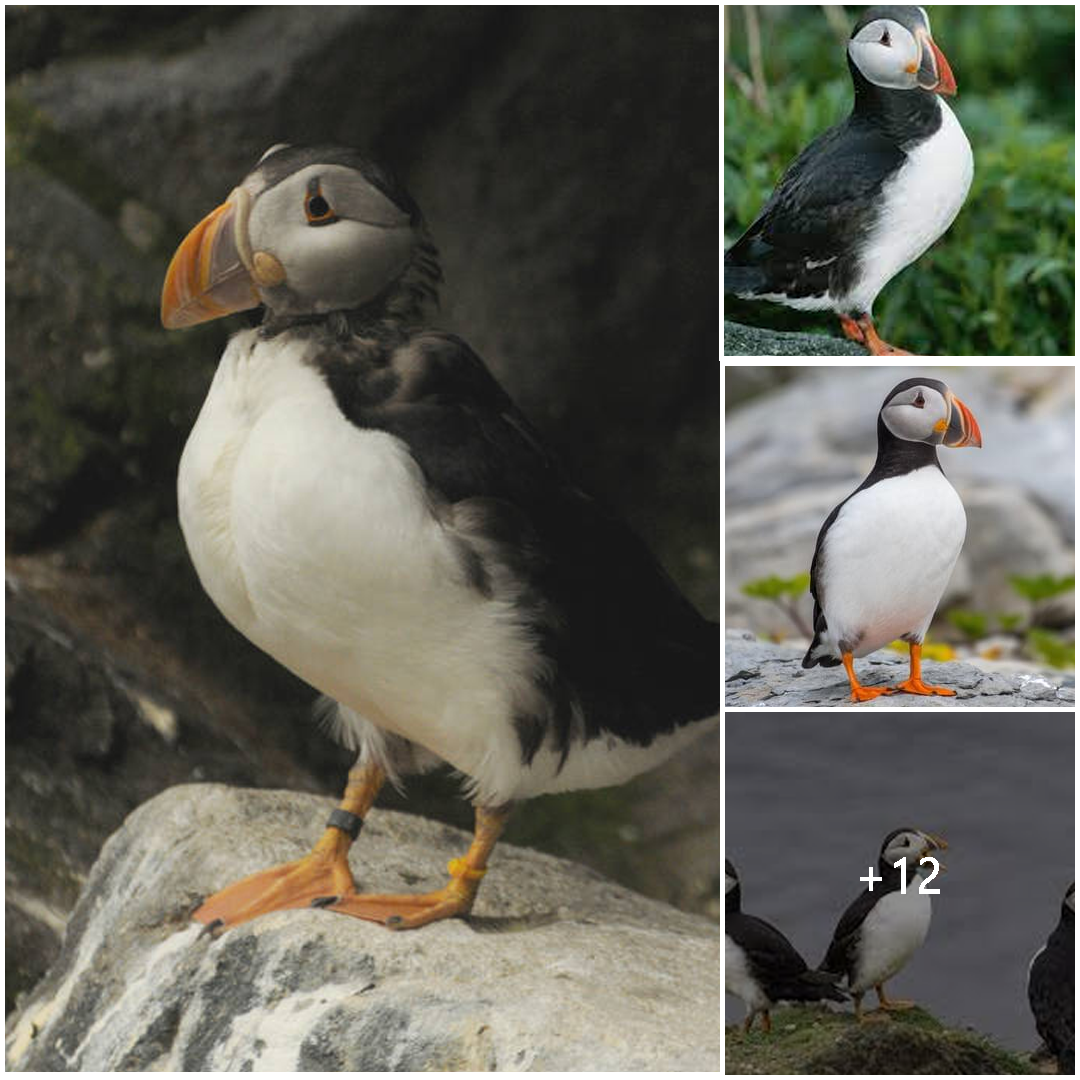
The Atlantic Puffin: A Charismatic Seabird of the North Atlantic
The Atlantic Puffin, scientifically known as Fratercula arctica, is a captivating seabird that inhabits the coastal cliffs and islands of the North Atlantic Ocean. Renowned for its distinctive appearance and endearing behavior, the puffin holds a special place in the hearts of nature enthusiasts and conservationists alike. Let’s delve into the fascinating world of this iconic bird.
Appearance:
With its striking black and white plumage, bright orange bill, and piercing, soulful eyes, the Atlantic Puffin boasts a distinctive and instantly recognizable appearance. During the breeding season, adult puffins also develop colorful beak plates and ornamental crests, adding to their charismatic allure.
Habitat and Distribution:
Atlantic Puffins are primarily found in the northern parts of the Atlantic Ocean, nesting in large colonies on remote coastal cliffs and offshore islands. Key breeding sites include locations such as Iceland, Norway, the Faroe Islands, and the British Isles, where they excavate burrows in the soft soil or nest in rocky crevices.
Behavior and Diet:
These seabirds are adept fliers and proficient swimmers, utilizing their wings for propulsion underwater to hunt for fish, their primary source of food. Puffins are skilled divers, capable of reaching depths of up to 60 meters (200 feet) in search of prey, which typically include small fish such as sand eels, herring, and capelin. Their unique beak is specialized for grasping and holding multiple fish at once, making them efficient hunters.
Breeding and Life Cycle:
Atlantic Puffins are monogamous and typically form long-term pair bonds, returning to the same breeding sites year after year. During the breeding season, which typically occurs from late spring to early summer, puffins engage in elaborate courtship displays, with males offering gifts of fish to their prospective mates. After mating, females lay a single egg, which both parents take turns incubating for about 40 days. Once hatched, the chick is cared for by both parents and fledges after approximately 6-7 weeks.
Conservation Status:
Despite their widespread distribution, Atlantic Puffin populations face various threats, including habitat degradation, overfishing of their prey species, and climate change-induced alterations to oceanic conditions. As a result, the International Union for Conservation of Nature (IUCN) classifies the Atlantic Puffin as a species of “Least Concern,” although localized declines have been observed in some regions. Conservation efforts aimed at protecting key breeding sites and addressing threats to marine ecosystems are crucial for ensuring the long-term survival of these beloved seabirds.
In summary, the Atlantic Puffin’s endearing appearance, fascinating behavior, and vital ecological role make it a cherished symbol of the North Atlantic’s rich marine biodiversity. As stewards of our oceans, it is incumbent upon us to safeguard the habitats upon which these charismatic seabirds depend, ensuring that future generations can continue to marvel at the sight of these remarkable creatures soaring above the waves.





